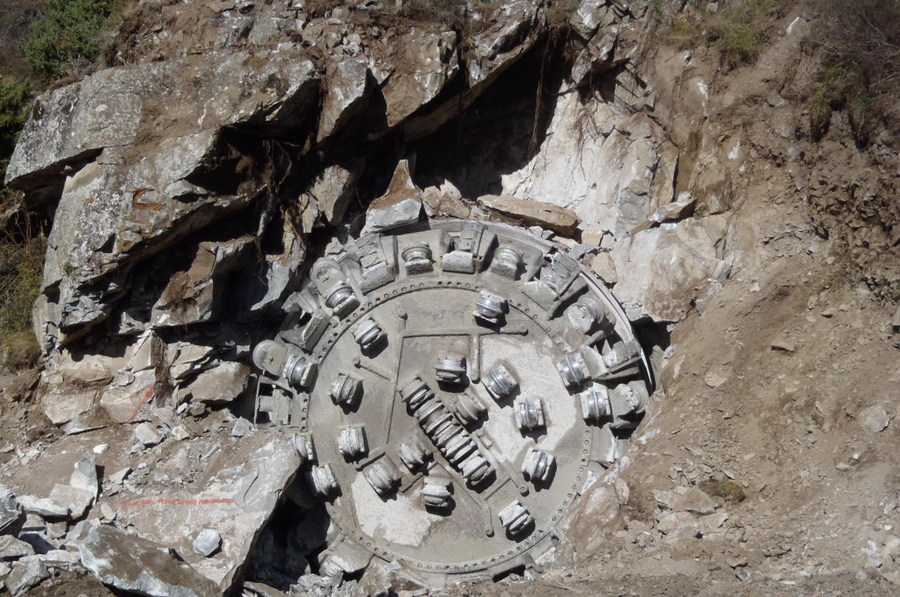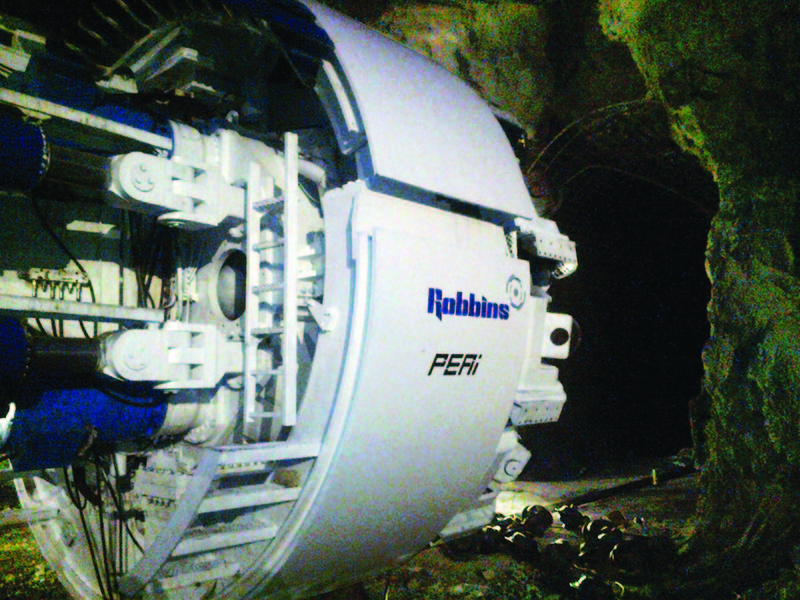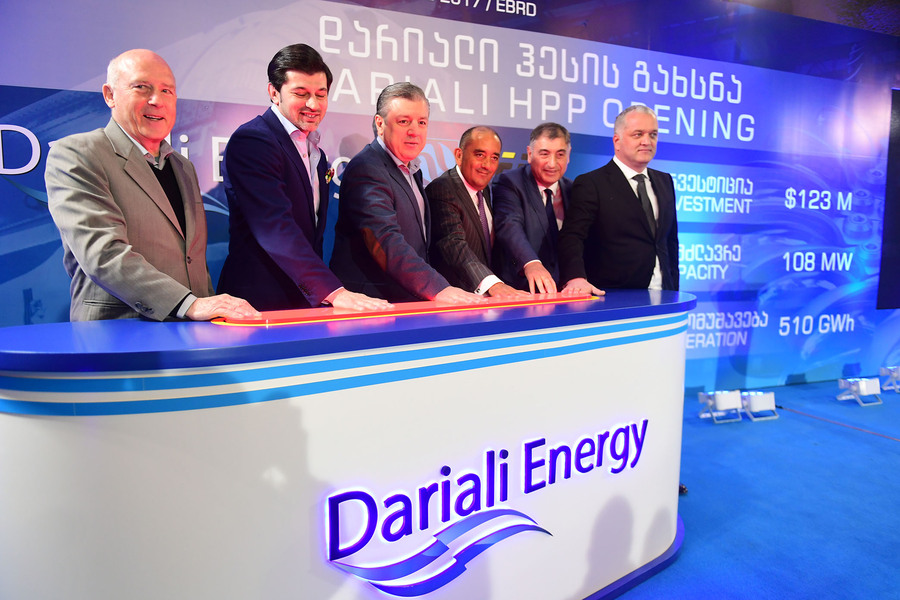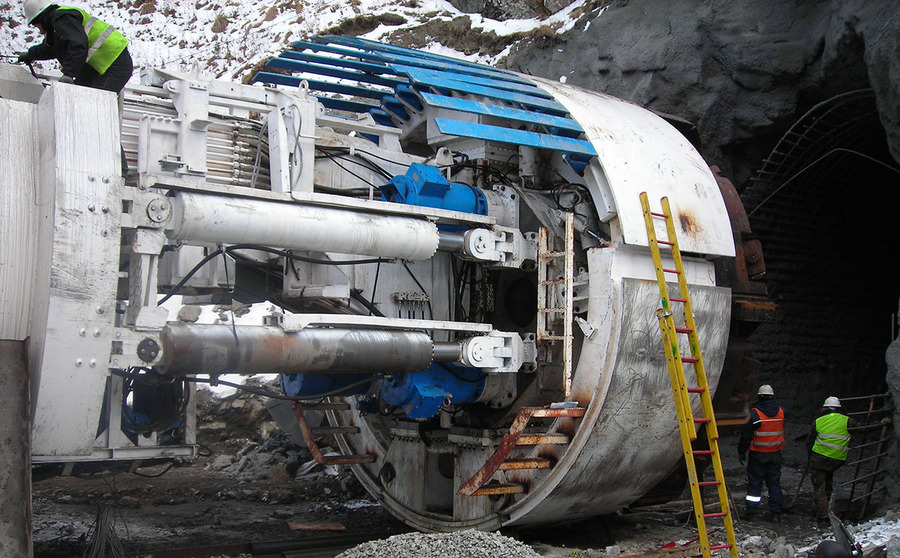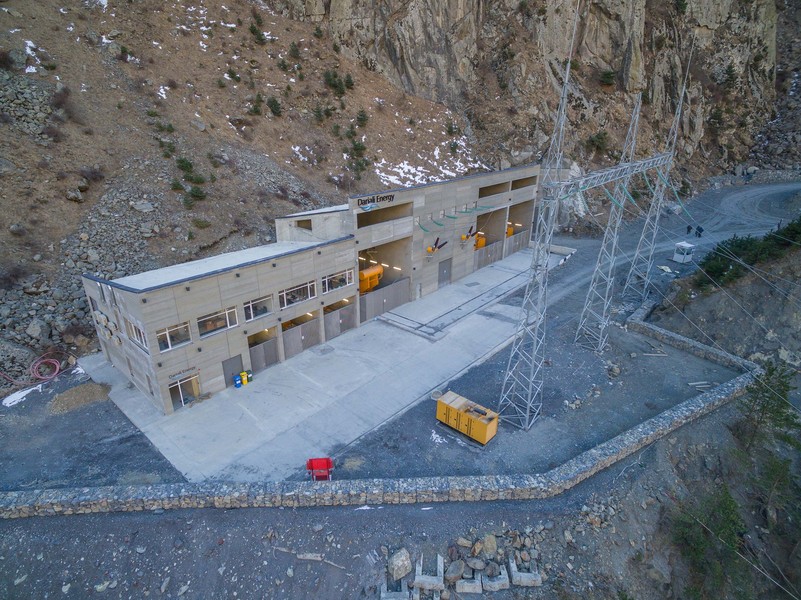Home \ International \ Robbins celebrates tough tunnels for clean energy
Robbins celebrates tough tunnels for clean energy
01/06/2017
Pubblicato da Redazione
In April 2017, a ceremony was held to celebrate the commissioning of the Dariali Hydropower Project in the Republic of Georgia. Many attended the ceremony marking the first carbon-neutral hydropower
In April 2017, a ceremony was held to celebrate the commissioning of the Dariali Hydropower Project in the Republic of Georgia. Many attended the ceremony marking the first carbon-neutral hydropower project in the world, including Georgian Prime Minister, Giorgi Kvirikashvili. The power station, an independent power project (IPP) developed through Dariali Energy Ltd, was a joint venture involving three other firms: Georgian private companies Peri Ltd and Energy LLC, and state-owned Georgian Energy Development Fund (GEDF). The Dariali HPP gathers water from the Tergi River and directs it through the headrace tunnel to the power house located near the Russian—Georgian border. Each year, the site will generate 500 GWhs of carbon-neutral energy, with 70 percent of power production occurring during the country’s summer months.
Robbins also invested in the project by gaining equity through supplying tunneling equipment and services in consortium with contractor Peri. “Robbins understood the risk in the tunneling portion of the project and we were compensated for taking on part of the risk. Peri is a long-time customer, as we supplied a TBM to them 15 years ago for a small project in Georgia. It was great to be invited to invest and risk share on this project, and to work together again,” said Robbins President Lok Home. The 5 km (3 mi) long headrace tunnel for the power station was bored with the use of a 5.5 m (18 ft) diameter Robbins Main Beam TBM starting in February 2012.
Due to the remote and mountainous location of the jobsite 160 km (100 mi) from the capital Tbilisi, the machine was shipped in pieces to contractor Peri’s workshop, where they were refurbished under Robbins supervision and then delivered to the site to be assembled. Each piece was transported by truck down narrow, winding roads that eventually gave way to dirt paths. Assembly at the jobsite was difficult, as the project site at a 1,700 m (1.0 mi) altitude was blanketed in snow and components arrived in December. Bone-chilling temperatures often reached negative 15 degrees Celsius (5ºF), and 40 below with the wind chill factor. Once the machine had launched, it encountered difficult ground including slate, sandstone, limestone and malms with fault zones.
“The main challenges we faced were boring the tunnel at a 6 percent incline and having restricted access to service the machine. There were also two major landslides that delayed the project for over a year,” said Home. After the first landslide, the access tunnel, which had allowed mud and water to enter the power station, had to be relocated at a higher elevation and facing away from the river valley. When the machine was nearing the end of its bore, a second landslide blocked the exit portal for the machine as well as access to the main highway. Despite these challenges, tunneling crews persevered and the machine successfully holed through in October 2014.
Throughout the construction process, careful steps were taken to minimize the carbon footprint. Although the plant’s energy production is carbon emission free, construction of the plant was not. To offset these emissions, 7,000 seedlings are being planted all around the area in a reforestation effort. In years to come, the trees will absorb enough carbon dioxide to compensate for the emissions produced during the construction of the hydropower plant.
Overall, said Home, there is much to celebrate as the project has immense benefits: “Not only does it provide affordable electrical power for the country with essentially no pollution effects, but it also provided jobs during construction and will continue providing jobs during its operation and maintenance.”
Ultime notizie di

01/07/2021
The compact Sennebogen 613 E telescopic mobile crane proves its flexibility and safety in the mine
Südwestdeutsche Salzwerke AG welcomed a new Sennebogen 613 E...

07/11/2019
COMANSA presents its new 21LC1400 model
A new large-capacity Flat-Top crane

26/09/2017
Robbins Slurry TBM ramps up for Mumbai Metro Line 3
The first of two Slurry TBMs, a rebuilt 6.65 m (21.8 ft) dia...

23/09/2017
The world’s strongest rope for the German Zugspitzbahn
For walkers and winter visitors, there are two ways to ride...

21/09/2017
Modulift beams suspend full scale model fighter jet
Four Modulift spreader beams were used to suspend a full sca...

20/09/2017
A tunnel project with PSC Crane & Rigging
PSC Crane & Rigging, headquartered in Piqua, Ohio, supplied...
Altri International

International
23/11/2024
GPMat International takes delivery of two Raimondi T147s residential development in the South of France
- Official agent of France expands its product lineup with t...

International
22/11/2024
Sarens acquires additional SCHEUERLE SPMT K24 modules
renowned for its expertise in crane rental services, heavy l...
International
22/11/2024
Five WOLFF cranes modernize Oslo’s Ulven district
With a total of five WOLFF cranes of type 7534.16 Clear, Wol...

International
21/11/2024
Kleemann: New compact crusher used for recycling
Impact crusher MOBIREX MR 100i NEO impresses during operatio...
International
21/11/2024
SITECH partners with Royal Engineers to create poppy and demonstrate tech offering
The demostration involved creating a ground-level poppy desi...
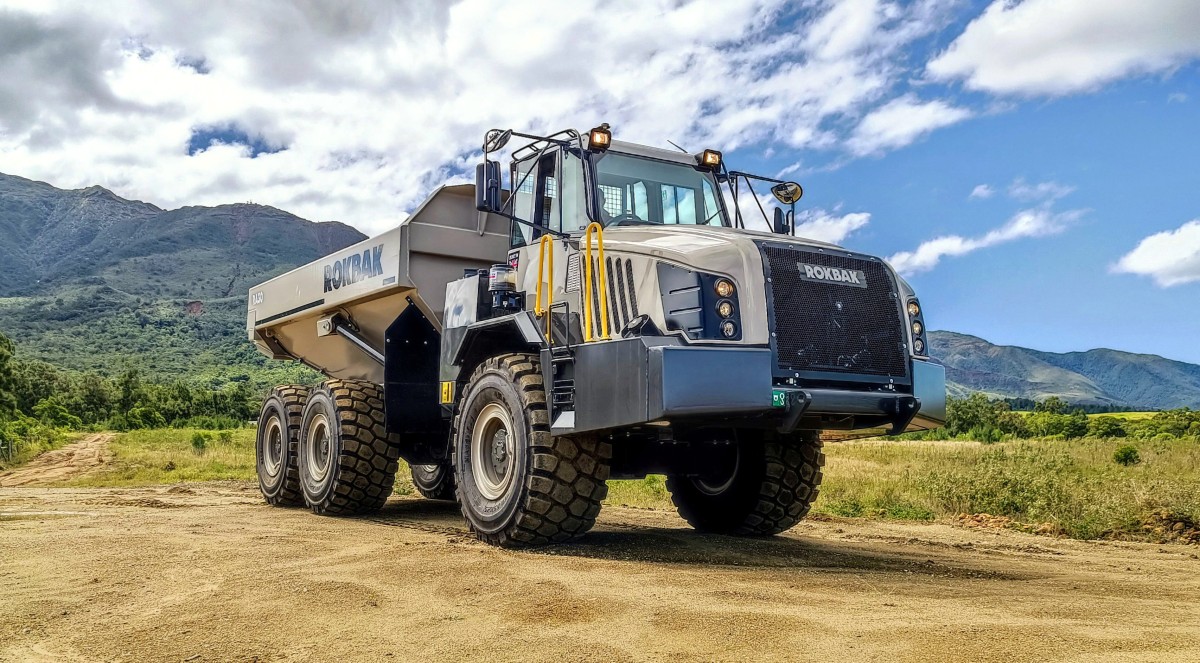
International
20/11/2024
Strong and stable RA30 trucks carry the weight at New Caledonian mine
Three Rokbak RA30 trucks are delivering exceptional durabili...











